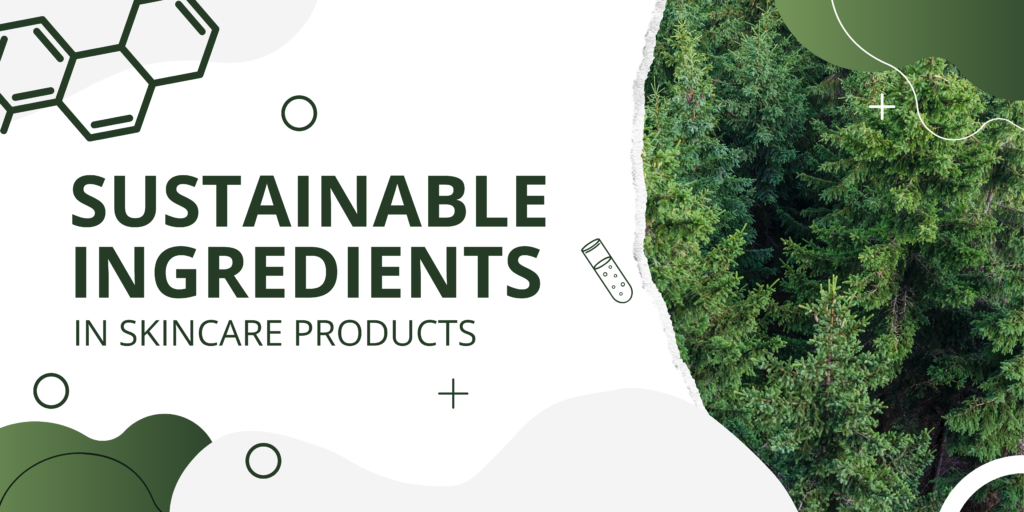As consumers, we tend to focus on the claims companies make about their products rather than their ingredients and manufacturing process. We look for buzzwords like “clean” “natural” “organic” “vegan” “environmentally friendly” when making decisions about what skincare products to put on our faces. Whilst this is not wrong, we need to look more carefully at the ingredients and the processes used in the creation of our beauty products.
Many companies tend to use petrochemical ingredients in their products that are derived from petrol which is a non-renewable and environmentally harmful resource. A bio-based process of production, on the other hand, focuses on deriving oleochemicals from renewable plants and bacteria sources. However, it is difficult to know what companies do use a bio-based process of production and which ones do not. The companies that do use a bio-based process of production are in pursuit of these oleochemicals that are used in creating their sustainable products.
What are oleochemicals and where do they come from?
These are chemical compounds that are derived industrially from animal or vegetable oils or fats and they are then used to create clean products in the skincare industry. They are mainly found from these three sources:
- Natural oils: Fatty alcohols are derived from oils such as coconut oil and palm oil which are used as chemical surfactants in the production of skincare products.
- Agricultural plants: Plants such as soybeans, corn, sugarcane and other are used to produce oils and alcohols. Green cosmetic emulsifiers, surfactants and biocatalysts are derived using these plants and can be cheaply and sustainably sourced.
- Bacteria: There is currently a resource known as the Deinoccus bacteria that is currently under development, its chemical properties can be used to create aromatic ingredients and pigment for the cosmetic industry.
What are some non-sustainable ingredients in skincare?
Now that we know about the resources used to create clean and sustainable skincare products, it is important to know the non-sustainable ingredients that are used in other skin care products. Some of these are used in such small portions that brands still claim to be clean and natural despite having these ingredients in their products.
- BHA and BHT: These are synthetic antioxidants that are used as preservatives and most commonly found in moisturizing creams. The European Commision released evidence that proved that these preservatives disrupt the endocrine system.
- Coal tar dyes: These are dyes that are a mixture of petrochemicals and have been linked to causing skin cancer. They are usually listed as p-phenylenediamine or ‘CI” on labels.
- Formaldehyde-releasing preservatives: These preservatives that release small amounts of formaldehyde which is a known human carcinogen.


Why should we care if our skincare products are sustainable?
- Environmental Responsibility: Many petrochemicals found in skincare products are toxic pollutants and degrade the environment. This is why it is important for us to be aware of the damages that our products cause to the world around us.
- Long-term Health: Petrochemicals can sometimes deliver short-term results that seem desirable, however their long-term effects can be highly toxic to humans. Long-term use of products containing petrochemicals has been traced to headaches, eye damage, acne, hormonal imbalances, premature aging, dermatitis, skin cancer and more. This is why it is important to look for products that use sustainable ingredients that will not affect your health in the long run.
- Effectiveness of sustainable products: Natural and oleochemical ingredients have been proven to cause less skin irritation or allergic reactions due to their gentle nature. These ingredients rely on the healing properties that are found naturally in plants and animals so they are less likely to be harmful for the skin.
How does LASPA use sustainable ingredients in their products?
LASPA’s Anti-Aging Glycolic Peel Treatment contains the only USDA certified Glycolic Acid on the market – meaning the product is 100% bio based. This means that the glycolic acid we use is derived from a fermentation process that uses microorganisms to produce a pure 100% biobased product. It is the purest, most sustainable glycolic acid that is good for both us as consumers and the planet.
The rest of LASPA’s product line also consists of naturally sourced and certified organic ingredients with antioxidant properties. This means that you can be assured that the products you are putting on your skin are not harmful to the environment and will not cause long-term health issues. They are also hypoallergenic so if you have sensitive skin, the ingredients shall not irritate your skin.
Want to know more about LASPA’s sustianable products? Check out our website to learn more.






